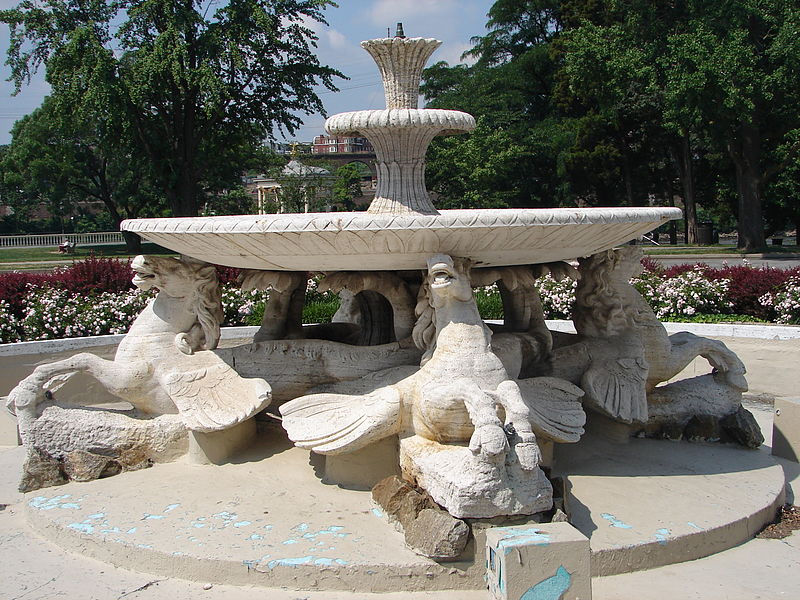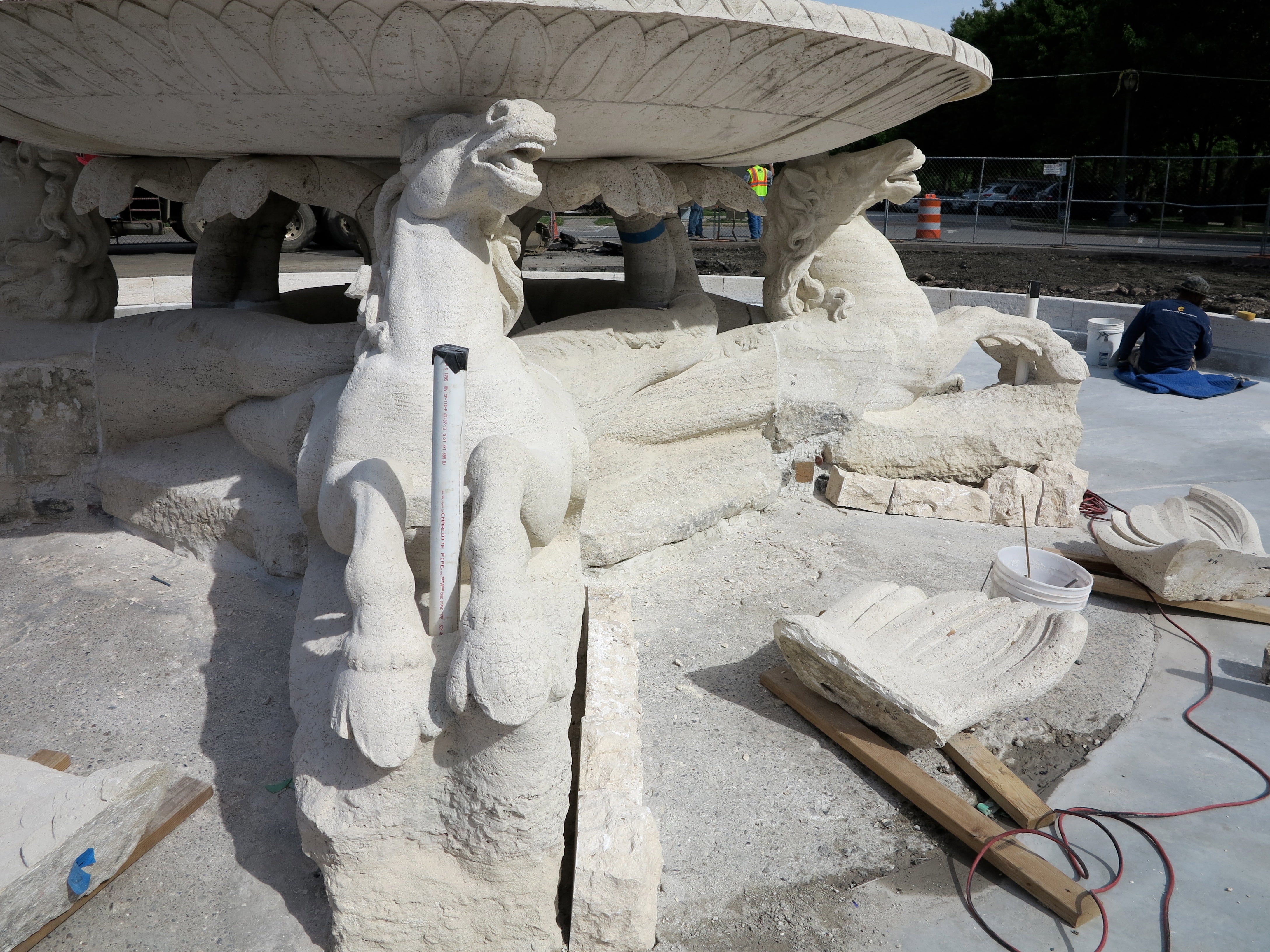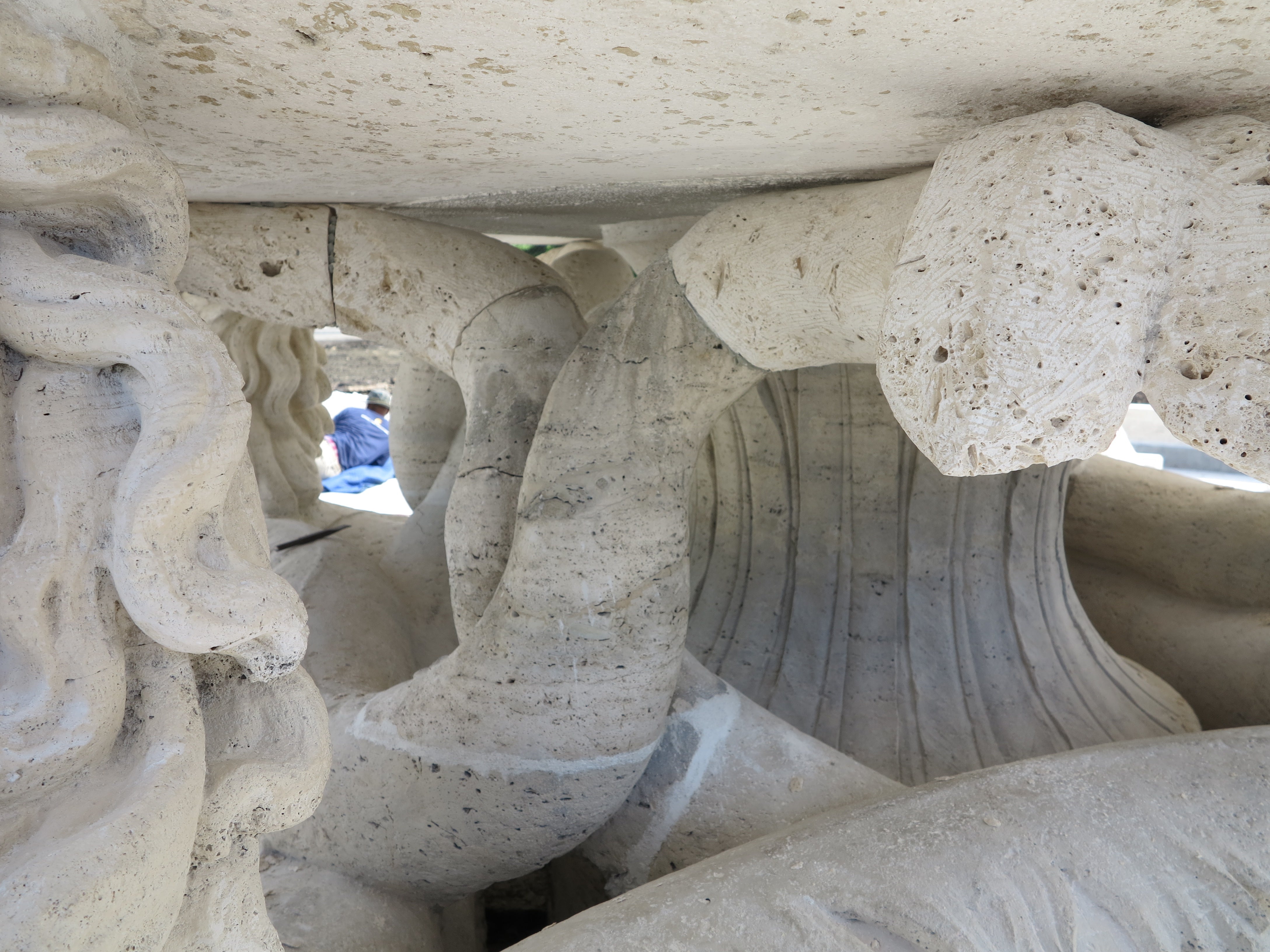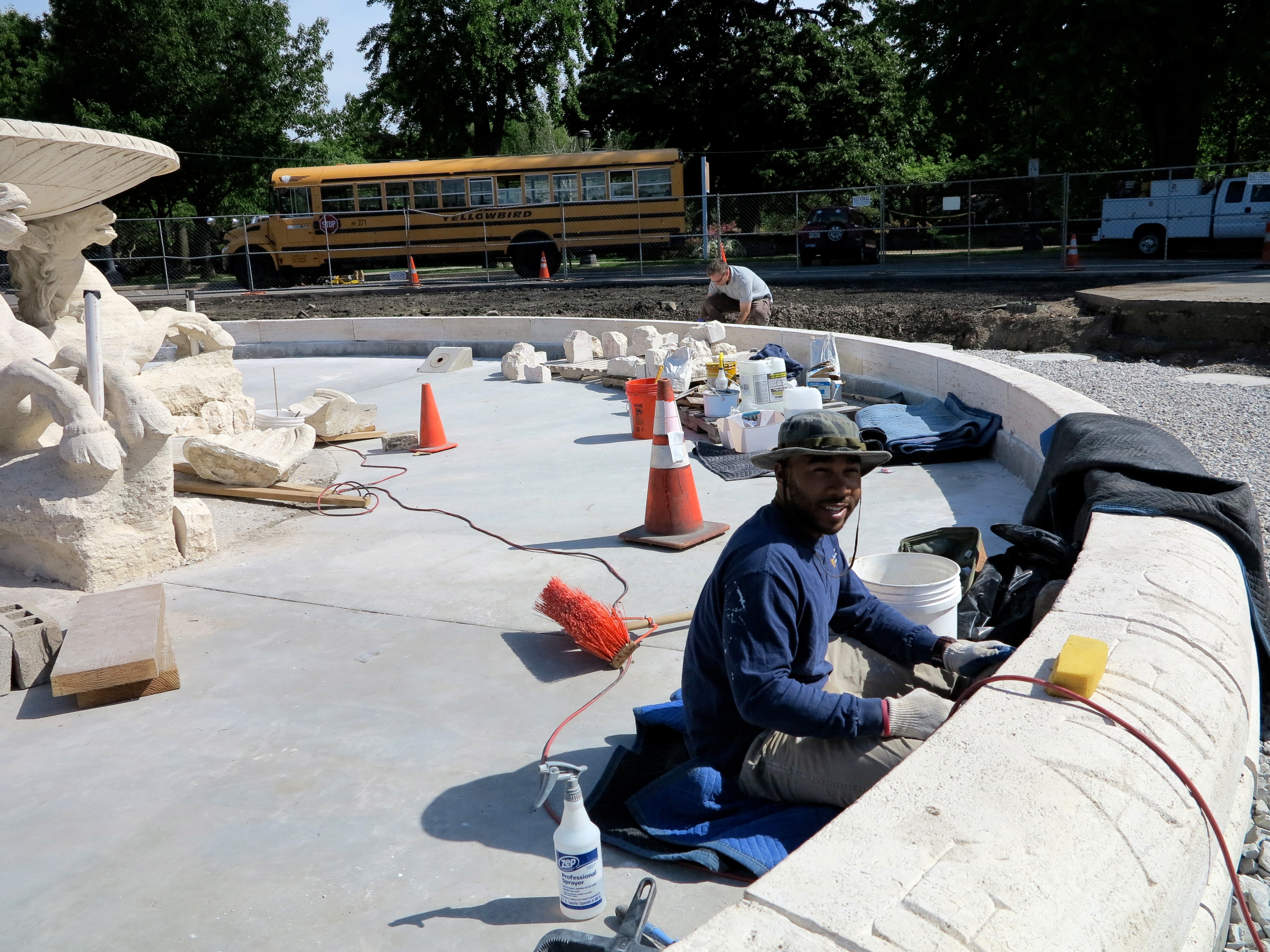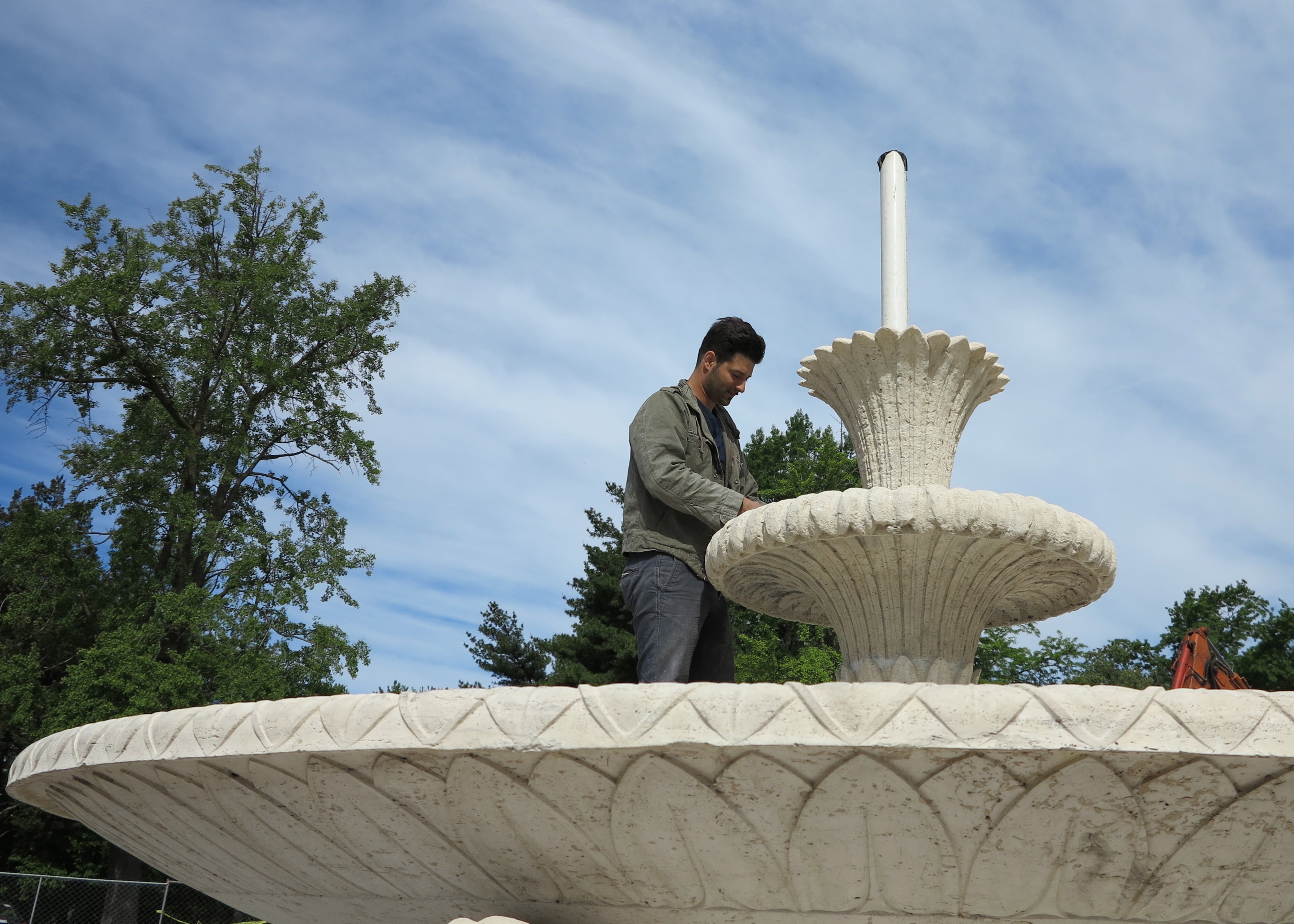Italian Fountain restored, getting ready to splash again this summer
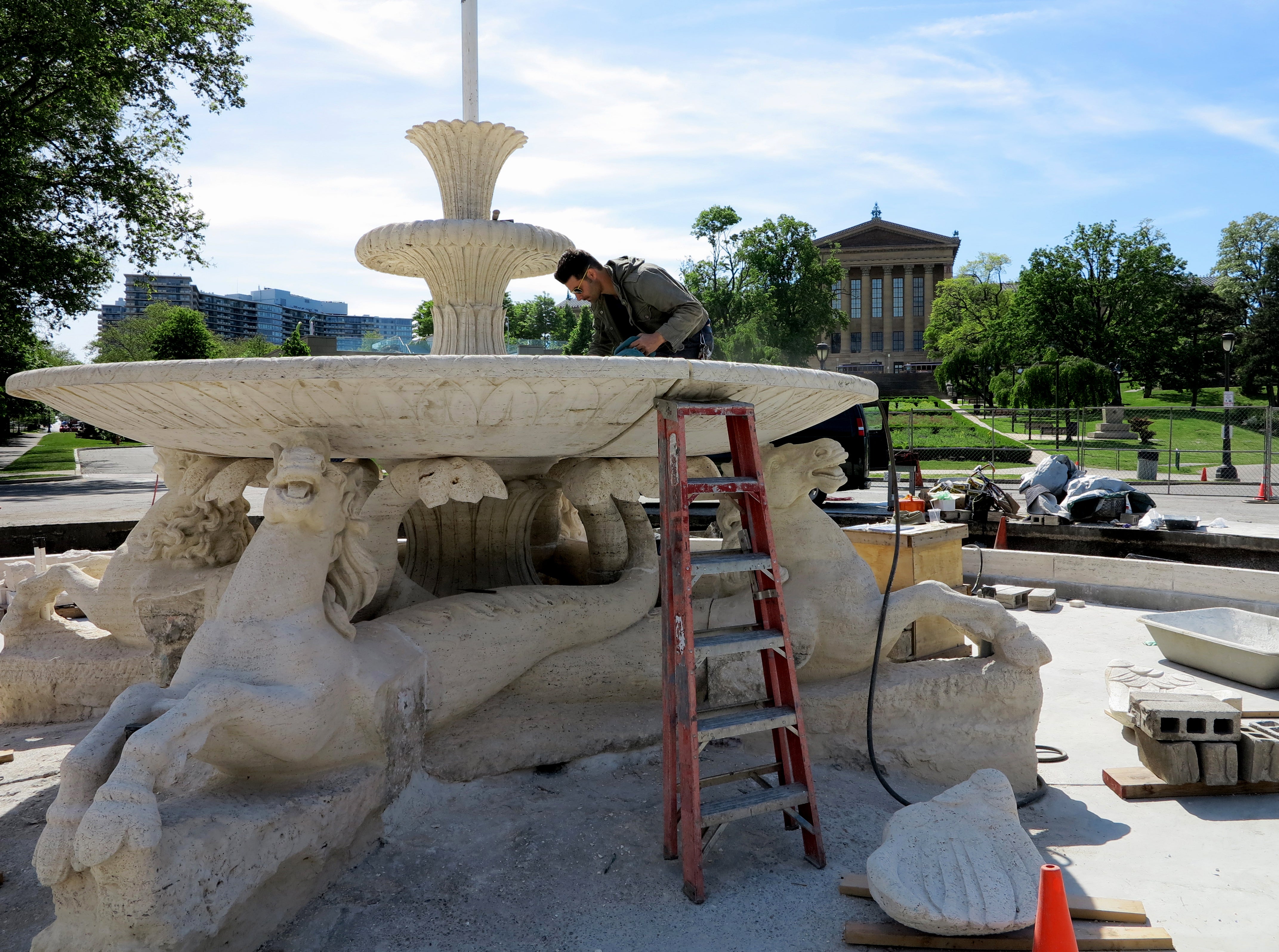
The seahorses behind the art museum have endured various indignities in recent decades: cement patching, pool paint, a non-functional fountain setting, and a recent dismemberment. But a team of conservators is nearly finished restoring and rebuilding The Fountain of the Seahorses, and already the Italian Fountain looks better than anyone’s seen it in decades. Come July these muscular beasts will once again splash in their fountain.
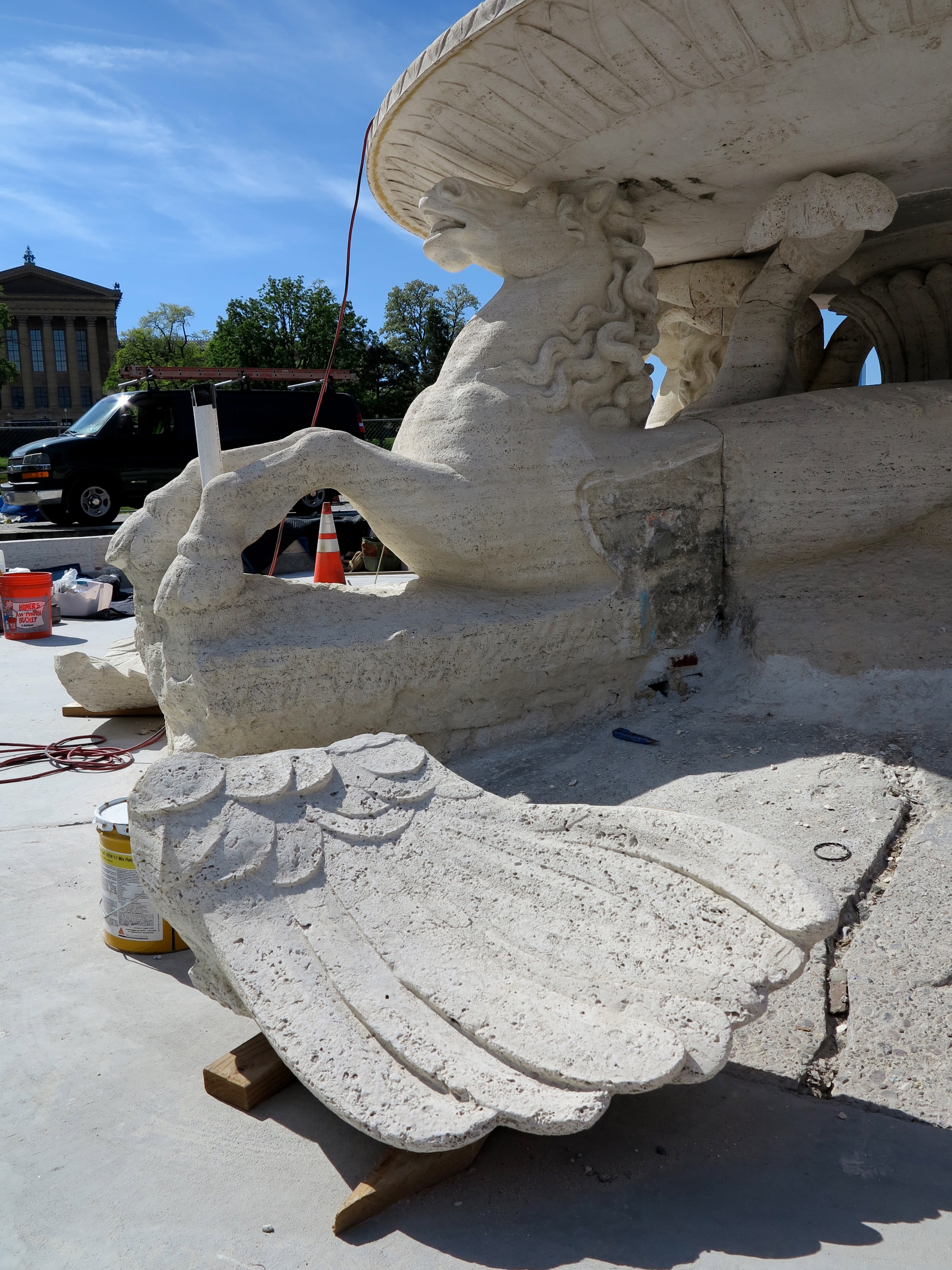
The Italian Fountain, a gift from Mussolini’s Italy in 1926 to commemorate the Sesquicentennial of America, is made of more than 40 tons of travertine (a kind of limestone) in about 65 pieces. The four horses weigh about 5,000 lbs each, and the four sections of the shallow bowl clock in at about 4,000 lbs each. There are 36 coping stones that form the fountain’s basin – each with slightly different dimensions, with dedications carved in Italian and English.* Despite its beauty and craftsmanship, the fountain had seen better days.
Over time the seahorses’ tails had broken and were been replaced with cast concrete parts. Charles Mottershead, the Department of Public Property’s Project Director for Parks, explained those concrete pieces date from an effort during a well-intentioned attempt to spruce up the fountain before the Bicentennial.
Over time Fairmount Park crews did what they could to maintain the fountain given budgetary constraints. “Probably the pool paint was what they had at the time. It’s not typically how you do a fountain,” Mottershead said.
The fountain was turned off a few years ago because its drain to the Schuylkill River was clogged. Mottershead explained that the fountain and parking area drain into a narrow channel between the shore and an island in the river. The channel, however, gets silted up every two to three years and requires dredging to restore proper drainage, which costs about $200,000. And while the city didn’t have the budget to dredge the channel in recent years, that time was used to plan the fountain’s complete restoration as part of a phased effort to improve the landscape from the Water Works to Boathouse Row.
[UPDATED] **In 2012 the city posted an RFP for the fountain’s renovation, and Materials Conservation Co. (MCC) won the bid. Funding for the project largely came through a Department of Conservation and Natural Resources grant matched by city money, Mottershead said.
Expert riggers and crane operators carefully disassembled the fountain’s hulking pieces and removed them to MCC’s studio. There, conservators removed concrete patches, epoxy, and pool paint; cleaned the hulking travertine pieces; repaired fragile elements and fabricated missing parts. And of late, the fountain has been put back together again on a freshly-poured concrete basin.
Replacement tails were carved by master sculptor Jens Langlotz out of travertine sourced from Turkey. Those had to be attached with pins, but the rest of the fountain’s elements were largely reconstructed just as it was originally.
“Everything was done with shims and mortar and patience,” explained MCC conservator Marco Federico. “That’s sort of our reinstallation philosophy too.”
Once the fountain came apart the team discoverd an unfortunate surprise: The central disc that bears much of the load from the 4,000-pound pieces of stone that make up the bowl had cracked, compromising its strength. That meant that the team was forced to recast this section in concrete, which is fortunately well hidden from public view.
After the huge stone sections were reset in the fountain, the new tails were installed. Langlotz returned smooth and sharpen the lines of the replacement sections and make sure that the exuberant, organic forms looked just right.
To complement the fountain’s rejuvenated exterior, new mechanical, electrical and plumbing systems were also installed.
Until recently the fountain felt like the center of a traffic circle instead of a park, but the area’s auto-centricity is getting a makeover too. Olin developed plans for a new park zone between the Museum and Boathouse Row. The formerly paved expanse adjacent to the fountain will soon be populated with native and Italian-inspired plantings as well as new benches that will invite people to sit and enjoy the view and fountain itself. The next phase of this landscape proejct will include a bridge and boardwalk connection to the little island in the Schuylkill and further plantings toward Lloyd Hall.
*Prize goes to the first person to spot the fountain’s typo. (Yes, on the fountain.)
** [UPDATED 6/3/13] CORRECTION: This article incorrectly stated that Milner+Carr Conservation had been hired to do a conditons assessment of the fountain to plan for its rehabilitaiton prior to the firm’s new incarnation, MCC, winning the bid.
WHYY is your source for fact-based, in-depth journalism and information. As a nonprofit organization, we rely on financial support from readers like you. Please give today.



